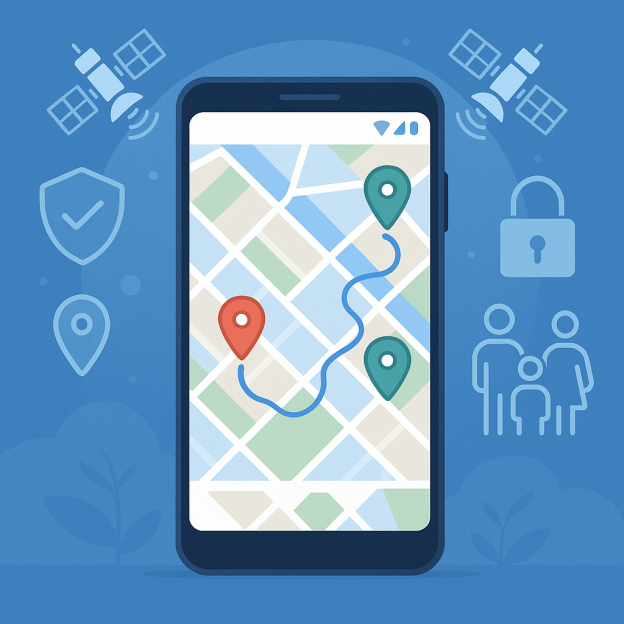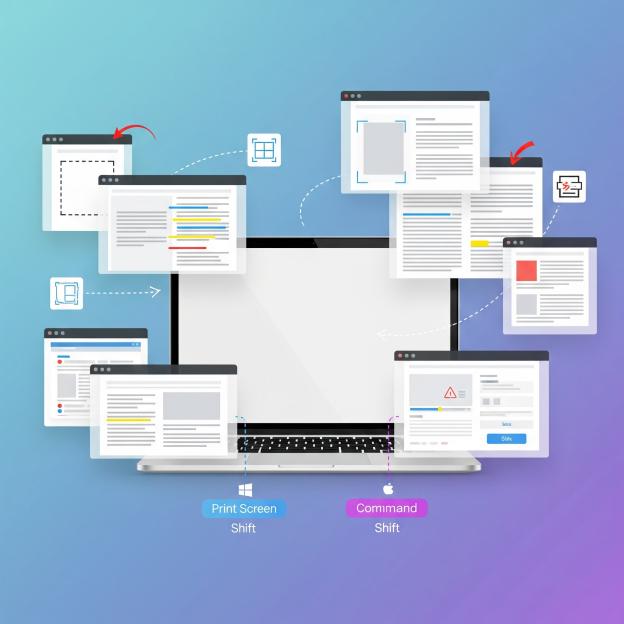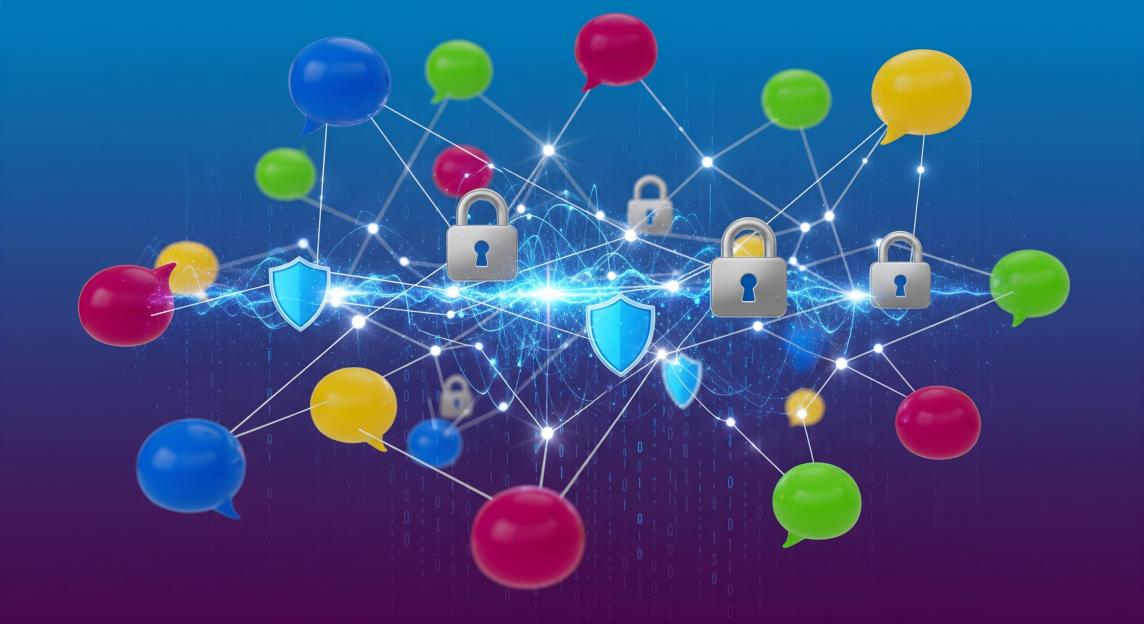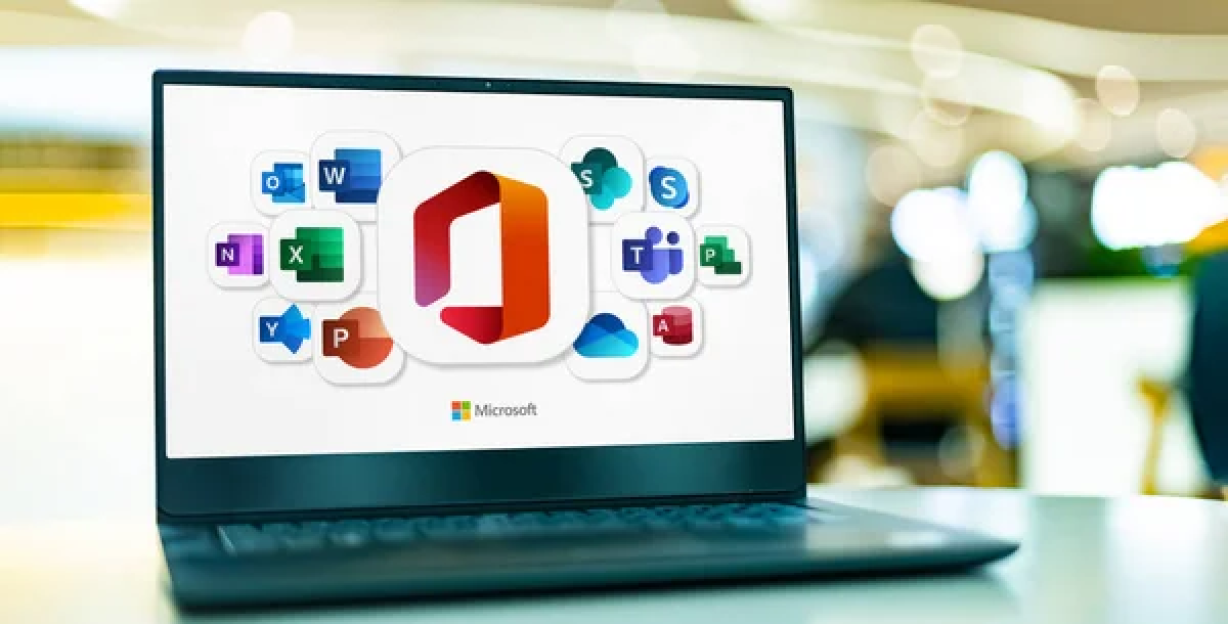Your teenager is hours late coming home, their phone seems to be off, and that familiar knot of worry starts forming in your stomach. Or maybe you’ve misplaced your own device somewhere in your house, and you’re frantically retracing your steps. These moments of uncertainty have become part of modern life, but technology offers solutions that can bring peace of mind when used responsibly and legally.
Mobile number tracking with Google Maps has evolved from a niche technology tool into an accessible feature that millions of Americans use daily for legitimate purposes like family safety, device recovery, and business fleet management. However, with great technological power comes the responsibility to understand both the capabilities and the legal boundaries of these tracking methods.
IMPORTANT LEGAL DISCLAIMER: This article is for educational purposes only. Always ensure you have proper consent before tracking any mobile device. Unauthorized tracking may violate federal and state privacy laws. Consult legal professionals for specific situations.
Understanding Mobile Number Tracking Technology
Mobile number tracking combines several technologies to pinpoint a device’s location. At its core, this process involves GPS satellites, cellular tower triangulation, and Wi-Fi positioning systems working together to create accurate location data.
When your smartphone connects to cellular networks, it constantly communicates with nearby cell towers. These towers record signal strength and timing data, allowing the network to calculate approximate distances. By using signals from multiple towers, the system can triangulate your device’s position with remarkable accuracy.
GPS tracking provides the most precise location data by communicating directly with satellites orbiting Earth. Modern smartphones contain GPS chips that receive signals from multiple satellites simultaneously, calculating exact coordinates that can then be displayed on mapping services like Google Maps.
Wi-Fi positioning adds another layer of accuracy, especially in urban areas where GPS signals might be blocked by buildings. Your device scans for nearby Wi-Fi networks and compares them against databases of known network locations, providing additional positioning data.
How Google Maps Integration Works
Google Maps serves as the visual interface for location tracking services. When you track a mobile number through legitimate apps and services, the location data gets translated into map coordinates that Google Maps can display.
The integration process involves several steps. First, the tracking service obtains location data from the target device through authorized means. This data includes latitude and longitude coordinates, timestamp information, and accuracy measurements. The service then formats this information in a way that Google Maps can interpret and display.
Google Maps API allows developers to create custom tracking applications that can show real-time location updates, location history, and geofenced areas. These applications can display markers, routes, and detailed location information overlaid on Google’s comprehensive mapping data.
For family tracking services, this integration means parents can see their children’s locations displayed on familiar Google Maps interface, complete with street names, landmarks, and estimated arrival times. Business fleet managers can monitor vehicle locations and optimize routes using the same technology.
Legal Methods for Mobile Tracking
Understanding the legal landscape of mobile tracking is crucial for anyone considering these services. In the United States, mobile tracking laws vary by state, but several federal regulations provide overarching guidance.
Family Tracking
Parents generally have legal authority to track minor children’s devices. Family safety apps like Life360, Find My Family, and Google Family Link operate under this principle. These services require account setup by the parent and typically notify all family members when location sharing is active.
Family tracking becomes legally complex when children reach the age of majority. While parents may continue tracking adult children’s devices, explicit consent becomes necessary. Many families establish tracking agreements that outline when and why location sharing is appropriate.
Device Recovery
Tracking your own lost or stolen device is universally legal and encouraged by law enforcement. Apple’s Find My iPhone, Google’s Find My Device, and Samsung’s Find My Mobile provide built-in tracking capabilities for device owners.
These services can locate devices even when they’re powered off or have limited battery life. They also offer features like remote lock, data wipe, and loud alarm activation to help recover lost devices or protect personal information.
Business and Fleet Tracking
Employers can legally track company-owned devices and vehicles, but they must typically inform employees about monitoring activities. Many states require written consent or notification policies for workplace tracking.
Fleet tracking helps businesses optimize routes, monitor driver behavior, and improve customer service. These systems can reduce fuel costs, improve delivery times, and enhance overall operational efficiency while maintaining legal compliance.
Emergency Situations
Law enforcement agencies can request location data from cellular carriers in emergency situations. The Fourth Amendment protects against unreasonable searches, but exigent circumstances may allow tracking without warrants when immediate danger exists.
Emergency tracking services like Enhanced 911 (E911) automatically provide location information to emergency responders when someone calls for help. This technology has saved countless lives by helping first responders locate callers quickly and accurately.
Popular Mobile Tracking Apps and Services
The mobile tracking marketplace offers numerous legitimate applications designed for different use cases. Understanding the features and limitations of these services helps users make informed decisions about which tools best meet their needs.
Family Safety Applications
Life360 stands as one of the most popular family tracking services in America, with over 50 million users worldwide. The app provides real-time location sharing, driving reports, crash detection, and emergency assistance features. Family members can create private circles where location information is shared automatically.
Google Family Link integrates with Google’s ecosystem to provide parental controls alongside location tracking. Parents can set screen time limits, approve app downloads, and track device location through Google Maps integration. The service works seamlessly with Android devices and offers limited iOS functionality.
Apple’s Find My app serves iOS users with comprehensive family tracking capabilities. Family sharing allows up to six family members to share locations, find lost devices, and receive location-based notifications. The app includes precision finding for newer iPhone models and integration with AirTags for tracking non-electronic items.
Device Recovery Services
Google Find My Device helps Android users locate lost phones, tablets, and Wear OS devices. The service can make devices ring loudly, display custom messages on lock screens, and remotely erase data if recovery seems unlikely. Users can access these features through web browsers or other Android devices.
Samsung Find My Mobile offers enhanced features for Galaxy device owners, including remote backup, SIM card lock, and battery life extension. The service can locate devices even when they’re offline by using nearby Samsung devices to relay location information.
Prey Anti Theft provides cross-platform device tracking with advanced security features. The service can take photos using device cameras when unauthorized access is detected, track location changes over time, and provide detailed theft reports for law enforcement.
Business and Fleet Solutions
Verizon Connect offers comprehensive fleet management solutions that integrate with Google Maps for route optimization and driver monitoring. The platform provides real-time vehicle tracking, maintenance scheduling, and detailed reporting capabilities for businesses of all sizes.
Samsara focuses on Internet of Things (IoT) solutions for commercial fleets, combining GPS tracking with vehicle diagnostics, driver safety monitoring, and fuel usage optimization. The platform integrates with various mapping services to provide comprehensive fleet visibility.
Fleet Complete provides scalable tracking solutions for small businesses to large enterprises. The service includes Google Maps integration, driver behavior monitoring, and compliance reporting for industries with specific regulatory requirements.
Setting Up Mobile Tracking Safely
Proper setup ensures effective tracking while maintaining privacy and security. The process begins with choosing appropriate services based on your specific needs and legal requirements.
Initial Configuration
Start by researching available services and reading privacy policies carefully. Look for services that offer transparent data handling practices, strong encryption, and clear user consent mechanisms. Avoid services that make unrealistic claims about tracking capabilities or don’t clearly explain their legal compliance measures.
Create accounts using strong, unique passwords and enable two-factor authentication when available. Many tracking services store sensitive location data, making account security crucial for protecting personal information.
Download official applications from legitimate app stores rather than third-party sources. Verify developer credentials and read user reviews to ensure you’re installing authentic software from reputable companies.
Permission Management
Modern smartphones require explicit permission for location access, and users should understand these permission levels. “Always”; permission allows continuous tracking, while “While Using App”; limits tracking to active app usage. “Ask Next Time”; requires manual approval for each tracking request.
Review permission settings regularly and revoke access for services you no longer use. Many devices provide detailed location access logs showing which applications have accessed location data and when.
Consider creating dedicated Google accounts for tracking services to separate this data from your primary personal information. This approach provides additional privacy protection and makes it easier to manage tracking-related communications.
Privacy Protection
Enable location sharing only with trusted contacts and review sharing settings periodically. Many tracking services allow temporary location sharing for specific events or time periods, providing flexibility while maintaining long-term privacy.
Understand data retention policies for tracking services you use. Some services store location history indefinitely, while others automatically delete old data after specified periods. Choose services with retention policies that match your privacy preferences.
Consider using tracking services that process data locally on your device rather than uploading everything to cloud servers. This approach reduces exposure to data breaches while still providing necessary tracking functionality.
Privacy and Security Considerations
Mobile tracking inherently involves sharing sensitive personal information, making privacy and security critical considerations for all users. Understanding potential risks and implementing protective measures helps ensure tracking serves its intended purpose without compromising personal safety.
Data Protection Measures
Choose tracking services that use end-to-end encryption for location data transmission and storage. Encryption ensures that even if data is intercepted during transmission, it cannot be read without proper decryption keys.
Verify that tracking services comply with relevant privacy regulations like the California Consumer Privacy Act (CCPA) and other state privacy laws. Look for services that provide clear data deletion options and respect user requests to opt out of data collection.
Regularly review privacy settings and sharing permissions for all tracking applications. Technology companies frequently update privacy policies and default settings, potentially changing how your data is collected and used without explicit notification.
Common Security Risks
Unauthorized access to tracking data represents a significant security risk. Weak passwords, shared accounts, and unsecured devices can allow malicious actors to monitor your location without permission.
Social engineering attacks might trick users into installing malicious tracking software or sharing location information inappropriately. Be cautious about clicking links in text messages or emails claiming to offer tracking services.
Public Wi-Fi networks can expose location data to eavesdropping attacks. Avoid accessing tracking services on unsecured networks, and consider using VPN services when connecting to public Wi-Fi.
Best Practices for Safe Tracking
Implement regular security audits of all tracking services and applications. Review account activity, check for unauthorized access attempts, and update security settings as needed.
Educate family members about tracking service features and privacy implications. Ensure everyone understands how location sharing works and feels comfortable with the level of monitoring being implemented.
Consider using multiple tracking methods for critical situations rather than relying on a single service. Redundancy can ensure continued tracking capability if one service experiences technical difficulties or security breaches.
Troubleshooting Common Issues
Mobile tracking technology occasionally experiences technical difficulties that can affect accuracy and reliability. Understanding common problems and their solutions helps ensure consistent tracking performance when you need it most.
Location Accuracy Problems
GPS accuracy can be affected by various environmental factors including weather conditions, urban canyons created by tall buildings, and interference from electronic devices. Indoor tracking often proves less accurate than outdoor positioning due to satellite signal obstruction.
Improve accuracy by ensuring target devices have clear views of the sky when possible. Urban areas may benefit from Wi-Fi positioning data to supplement GPS signals. Some tracking services allow users to manually correct location data when automatic positioning proves inaccurate.
Battery optimization settings on smartphones can interfere with location tracking by limiting background app activity. Review device settings to ensure tracking applications have permission to run continuously and access location services even when not actively displayed.
Connectivity Issues
Cellular network coverage gaps can prevent real-time location updates, particularly in rural areas or inside large buildings. Some tracking services store location data locally and upload it when connectivity resumes.
Wi-Fi connectivity problems can affect indoor positioning accuracy and prevent location data synchronization. Ensure target devices connect to trusted Wi-Fi networks when available to improve tracking performance.
Internet service disruptions can prevent tracking applications from communicating with remote servers. Consider tracking services that offer offline capabilities for critical situations where internet access might be limited.
Application Malfunctions
Outdated tracking applications may experience compatibility problems with newer smartphone operating systems. Regularly update all tracking software to ensure optimal performance and security.
Memory limitations on older devices can cause tracking applications to close unexpectedly or fail to start automatically. Consider upgrading devices that frequently experience tracking application crashes.
Permission changes during operating system updates can disable tracking functionality without user awareness. Review application permissions after major system updates to ensure tracking services continue operating as expected.
Advanced Tracking Features
Modern mobile tracking services offer sophisticated features that go beyond basic location monitoring. These advanced capabilities can provide additional safety, security, and convenience benefits when used appropriately.
Geofencing Technology
Geofencing creates virtual boundaries around specific geographic areas and triggers notifications when tracked devices enter or exit these zones. Parents can set up geofences around schools, homes, and other safe locations to monitor children’s movements automatically.
Business applications of geofencing include monitoring when employees arrive at job sites, tracking vehicle entry into restricted areas, and automating timesheet management based on location data. These systems can improve operational efficiency while ensuring compliance with labor regulations.
Advanced geofencing features include custom notification schedules, multiple boundary shapes, and integration with other business systems. Some services allow users to create temporary geofences for special events or travel situations.
Historical Location Analysis
Location history tracking provides insights into movement patterns, frequently visited locations, and travel routes over time. This data can help identify unusual behavior, optimize daily routines, and provide evidence for various personal or business purposes.
Timeline features in tracking applications allow users to review detailed location histories with timestamps, addresses, and duration information. This capability proves valuable for expense reporting, schedule verification, and personal safety documentation.
Privacy controls for historical data typically include automatic deletion options, selective sharing capabilities, and data export features. Users should understand retention policies and configure settings according to their privacy preferences and legal requirements.
Emergency Response Integration
Modern tracking services integrate with emergency response systems to provide automatic crash detection, fall detection, and panic button features. These capabilities can significantly reduce emergency response times and potentially save lives.
Medical ID integration allows emergency responders to access critical health information when responding to incidents involving tracked individuals. This feature proves particularly valuable for elderly users, individuals with medical conditions, and people who engage in high-risk activities.
Automatic emergency contact notification ensures that designated individuals receive alerts when emergency situations are detected. These systems can provide location information, incident details, and communication capabilities during critical moments.
Legal Compliance and Ethics
Operating mobile tracking systems responsibly requires understanding both legal requirements and ethical considerations. Compliance helps protect all parties involved while ensuring tracking serves legitimate purposes.
Federal Regulations
The Electronic Communications Privacy Act (ECPA) governs electronic surveillance activities in the United States, including mobile device tracking. The law generally prohibits unauthorized interception of electronic communications but provides exceptions for legitimate activities like parental supervision and device recovery.
Computer Fraud and Abuse Act (CFAA) makes unauthorized access to electronic devices a federal crime. Installing tracking software on devices you don’t own without proper authorization could violate this law and result in serious legal consequences.
Fourth Amendment protections against unreasonable searches and seizures apply to government tracking activities but generally don’t restrict private tracking activities conducted with proper consent or legal authority.
State Privacy Laws
California Consumer Privacy Act (CCPA) provides comprehensive privacy protections for California residents, including rights to know what personal information is collected, delete personal information, and opt out of personal information sales.
Illinois Biometric Information Privacy Act (BIPA) includes location data in its definition of biometric information and requires specific consent procedures for collecting and storing this data.
New York SHIELD Act requires businesses to implement reasonable data security measures and notify individuals when personal information is compromised. Location data falls under this law’s protection requirements.
Ethical Guidelines
Obtain explicit consent before tracking any individual’s location, even in situations where legal authority exists. Clear communication about tracking activities helps build trust and ensures all parties understand the scope and purpose of monitoring.
Minimize data collection to only information necessary for legitimate purposes. Avoid tracking activities that go beyond stated needs or collecting more detailed information than required for specific use cases.
Implement strong data security measures to protect collected location information from unauthorized access, breaches, and misuse. Regular security audits and updates help maintain protection standards over time.
Future of Mobile Tracking Technology
Mobile tracking technology continues evolving rapidly, with new capabilities and applications emerging regularly. Understanding future trends helps users prepare for upcoming changes and opportunities.
Artificial Intelligence Integration
Machine learning algorithms increasingly analyze location data to provide predictive insights about movement patterns, potential safety concerns, and optimization opportunities. These systems can identify unusual behavior patterns that might indicate emergencies or security threats.
Artificial intelligence can improve tracking accuracy by combining multiple data sources and learning from historical patterns. Smart filtering reduces false alarms while ensuring legitimate alerts receive appropriate attention.
Natural language processing enables voice-activated tracking commands and conversational interfaces for managing tracking settings. These improvements make tracking technology more accessible to users with varying technical expertise.
Enhanced Accuracy Technologies
5G cellular networks provide improved location accuracy through advanced positioning techniques and reduced latency. These networks enable real-time tracking applications that require precise positioning and immediate response capabilities.
Indoor positioning systems using Bluetooth beacons, ultra-wideband technology, and improved Wi-Fi positioning provide accurate location data inside buildings where GPS signals are unavailable or unreliable.
Augmented reality integration allows users to visualize tracking information overlaid on real-world views through smartphone cameras. This technology can help locate devices, navigate to tracked individuals, and understand spatial relationships more intuitively.
Privacy-Preserving Innovations
Differential privacy techniques allow tracking services to provide useful functionality while mathematically guaranteeing individual privacy protection. These methods add controlled noise to location data to prevent identification while maintaining analytical value.
Homomorphic encryption enables computations on encrypted location data without decrypting it, allowing tracking services to process information while maintaining privacy. This technology could enable new tracking capabilities without compromising user privacy.
Decentralized tracking systems reduce reliance on central servers by distributing location data across peer-to-peer networks. These approaches can provide tracking functionality while giving users more control over their personal information.
Cost Analysis and Service Comparison
Understanding the financial implications of mobile tracking services helps users make informed decisions about which solutions best meet their needs and budgets.
Free Services
Google Find My Device provides basic location tracking for Android devices at no cost. The service includes remote lock, erase, and ring capabilities but lacks advanced features like family sharing and detailed location history.
Apple Find My offers comprehensive tracking for iOS devices without additional charges. The service integrates with iCloud accounts and provides family sharing, precision finding, and offline device location capabilities.
Life360’s basic plan includes real-time location sharing for families but limits features like location history, driving reports, and crash detection. Premium features require paid subscriptions with monthly or annual billing options.
Premium Services
Paid tracking services typically offer enhanced features like unlimited location history, advanced notifications, detailed reporting, and priority customer support. Pricing varies based on the number of tracked devices and feature complexity.
Business fleet tracking services charge based on vehicle count and required features. Entry-level plans might cost $20-40 per vehicle monthly, while enterprise solutions can exceed $100 per vehicle for comprehensive functionality.
Family safety applications usually charge $5-15 monthly for premium features across multiple family members. Annual subscriptions often provide significant discounts compared to monthly billing options.
Total Cost of Ownership
Consider device costs when evaluating tracking solutions. Some services require specific smartphone models or operating system versions, potentially necessitating device upgrades for full functionality.
Data plan costs can increase with tracking services that frequently transmit location information. Review cellular plan details to understand potential overage charges for increased data usage.
Integration costs might apply for businesses implementing tracking solutions alongside existing management systems. Professional installation, training, and ongoing support can add significant expenses to tracking implementations.
Conclusion
Mobile number tracking with Google Maps represents a powerful technology that can enhance safety, security, and convenience when used responsibly and legally. The key to successful implementation lies in understanding both the capabilities and limitations of available tracking methods while maintaining respect for privacy and legal requirements.
For families, tracking technology provides peace of mind during daily activities and emergency situations. Parents can monitor children’s safety while teaching responsible technology use and gradually transitioning to mutual location sharing as children mature.
Businesses benefit from improved operational efficiency, enhanced customer service, and better compliance with regulatory requirements. Fleet tracking and employee monitoring can reduce costs while improving safety and productivity when implemented with proper employee consent and clear policies.
Individual users gain device recovery capabilities, emergency response features, and location sharing options that can improve personal safety and convenience. Understanding privacy settings and security best practices ensures these benefits don’t come at the expense of personal information protection.
As tracking technology continues evolving, users must stay informed about new capabilities, changing legal requirements, and emerging privacy considerations. Regular review of tracking service terms, privacy policies, and security practices helps ensure continued safe and legal use.
The future of mobile tracking promises even more sophisticated capabilities while potentially providing better privacy protection through technological innovations. Staying educated about these developments helps users take advantage of beneficial features while avoiding potential pitfalls.
Remember that technology serves as a tool to enhance human decision-making and safety, not replace responsible behavior and communication. The most effective tracking implementations combine technological capabilities with clear communication, mutual respect, and appropriate legal compliance.
Whether you’re protecting family members, recovering lost devices, or managing business operations, mobile tracking with Google Maps integration can provide valuable capabilities when implemented thoughtfully and used responsibly. The key is finding the right balance between functionality, privacy, and legal compliance for your specific needs and circumstances.
Final Reminder: Always ensure proper legal authority and consent before tracking any mobile device. When in doubt, consult with legal professionals to ensure compliance with applicable laws and regulations. Technology should enhance safety and convenience while respecting individual privacy rights and legal boundaries.







